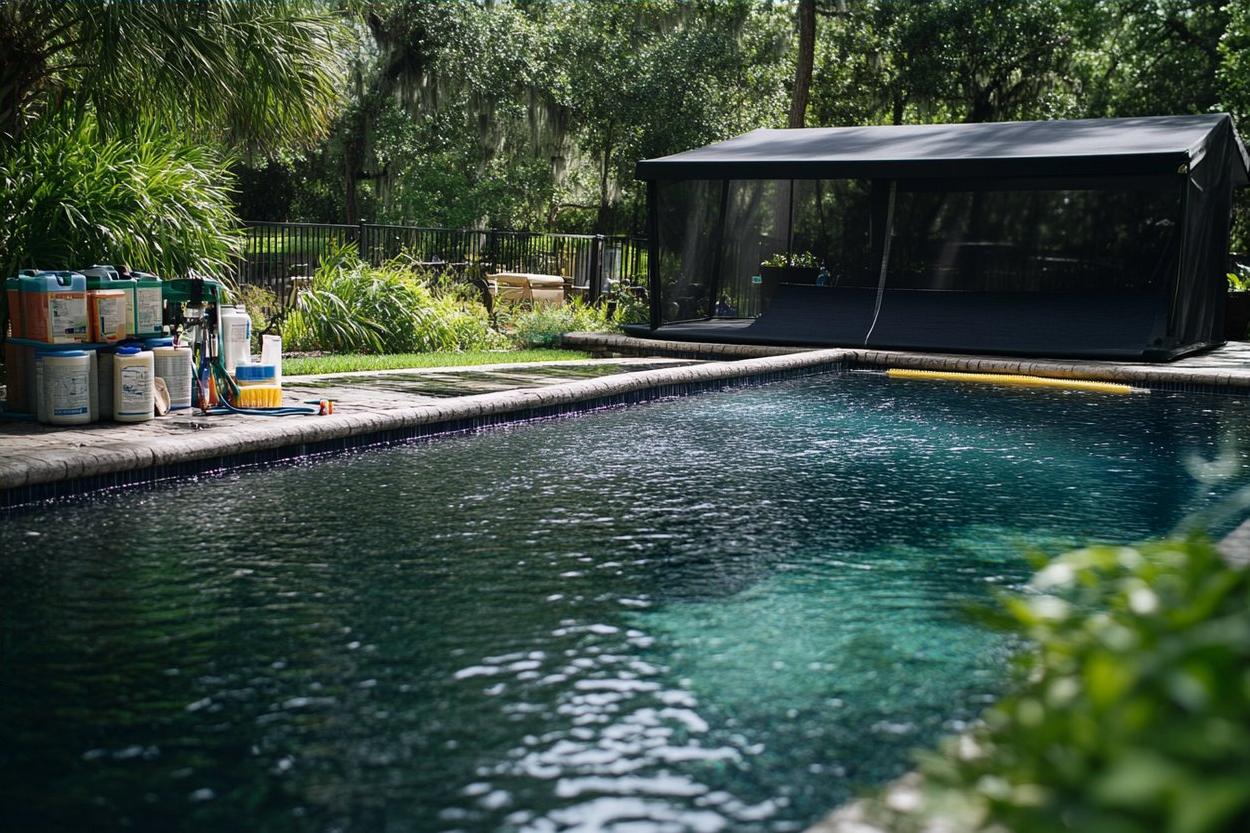Choosing Durable Fencing: Materials and Installation Guide
A garden fence serves multiple purposes, from defining property boundaries to enhancing privacy and adding aesthetic appeal to outdoor spaces. Whether you're looking to protect your plants from wildlife, create a safe play area for children, or simply improve your home's curb appeal, choosing the right fencing material and style is essential. Understanding the available options helps homeowners make informed decisions that balance functionality, durability, and visual appeal.

Fencing solutions are fundamental elements of residential landscaping, offering practical benefits while contributing to the overall design of outdoor spaces. Homeowners across Canada face unique considerations when selecting fencing materials, including climate resistance, maintenance requirements, and long-term durability. The right fence can transform an open, undefined space into a structured, protected environment that enhances both property value and daily enjoyment.
When planning a fence installation, several factors come into play. The intended purpose of the fence—whether for privacy, security, decoration, or animal control—significantly influences material selection and design choices. Additionally, local building codes and homeowner association regulations may dictate height restrictions, setback requirements, and approved materials. Understanding these considerations before beginning a project saves time, money, and potential frustration.
What Are Industrial Fence Panels and Their Applications?
Industrial fence panels represent heavy-duty fencing solutions designed for commercial properties, agricultural settings, and residential areas requiring maximum security and durability. These panels typically feature reinforced construction with thicker gauge materials and robust framework systems. While traditionally associated with commercial applications, industrial-grade panels have gained popularity among homeowners seeking long-lasting solutions for large properties or areas with challenging conditions.
The construction of industrial panels emphasizes strength and longevity. Many feature galvanized steel frameworks with welded mesh or chain-link infill, providing resistance to rust, corrosion, and physical damage. Some manufacturers offer powder-coated finishes in various colors, allowing these functional panels to blend with residential aesthetics. For outdoor applications, industrial panels work particularly well along property perimeters where security concerns exist or where livestock and large animals need containment.
Installation of industrial fence panels requires proper planning and often professional assistance due to their weight and structural requirements. Posts must be set in concrete at appropriate depths to support the panel weight and withstand wind loads. Spacing between posts varies based on panel dimensions, typically ranging from six to eight feet. The investment in industrial-grade fencing pays dividends through reduced maintenance needs and extended lifespan compared to lighter residential options.
How Do Metal Fence Panels Compare for Residential Use?
Metal fence panels offer versatility, durability, and modern aesthetic appeal for residential installations. Available in materials including aluminum, steel, wrought iron, and composite metals, these panels provide options for various budgets and design preferences. Metal fencing resists many common problems associated with organic materials, including rot, insect damage, and warping, making it an attractive choice for Canadian climates with significant temperature fluctuations.
Aluminum panels have become increasingly popular for residential properties due to their lightweight nature, rust resistance, and minimal maintenance requirements. Unlike steel, aluminum does not require regular painting or coating to prevent corrosion, though many manufacturers apply powder-coated finishes for enhanced appearance and protection. Aluminum panels come in numerous styles, from simple horizontal slats to ornamental designs mimicking traditional wrought iron at a fraction of the weight and cost.
Steel and wrought iron panels deliver maximum strength and security but require more maintenance to prevent rust and corrosion. Galvanized steel panels offer improved weather resistance, while powder-coated options provide both protection and aesthetic variety. For applications where decorative elements matter, ornamental metal panels with scrollwork, pickets, or custom designs create elegant boundaries that complement landscaping. The longevity of properly maintained metal fencing often exceeds 20 years, making it a sound long-term investment.
Are Wood Fence Panels Wholesale Options Cost-Effective?
Wood fence panels remain a classic choice for residential fencing, offering natural beauty, versatility, and relatively straightforward installation. Purchasing wood fence panels wholesale provides significant cost advantages for larger projects or when multiple properties require fencing. Wholesale suppliers typically offer pre-assembled panels in standard dimensions, reducing on-site labor and ensuring consistent quality across the installation.
Common wood species for fence panels include cedar, pine, spruce, and pressure-treated lumber. Cedar naturally resists decay and insect damage, making it a premium choice that requires minimal chemical treatment. Pressure-treated pine offers affordability with enhanced durability through chemical preservation processes. When buying wholesale, panels come in various styles including privacy, picket, lattice, and shadowbox designs, each serving different functional and aesthetic purposes.
| Panel Type | Material Options | Typical Cost Range (per linear foot) | Lifespan |
|---|---|---|---|
| Industrial Fence Panels | Galvanized steel, chain-link | $25-$45 | 25-30 years |
| Metal Fence Panels | Aluminum, steel, wrought iron | $20-$60 | 15-25 years |
| Wood Fence Panels Wholesale | Cedar, pine, pressure-treated | $15-$35 | 10-20 years |
| Vinyl/Composite Panels | PVC, wood-composite | $25-$50 | 20-30 years |
Prices, rates, or cost estimates mentioned in this article are based on the latest available information but may change over time. Independent research is advised before making financial decisions.
The cost-effectiveness of wholesale wood panels depends on several factors including wood species, panel style, and treatment methods. While initial costs may be lower than metal alternatives, wood requires regular maintenance including staining or painting every few years to maintain appearance and protect against weathering. Labor costs for installation are generally comparable across materials, though wood panels may require more frequent repairs or replacement of individual boards over time.
Maintenance Considerations for Different Fence Materials
Maintenance requirements vary significantly across fencing materials and directly impact long-term ownership costs. Metal panels, particularly aluminum and galvanized steel, require minimal upkeep beyond occasional cleaning with soap and water. Inspecting fasteners and hinges annually ensures continued structural integrity. Steel and wrought iron panels need periodic inspection for rust spots, which should be addressed promptly with wire brushing and touch-up paint to prevent spreading.
Wood fencing demands more regular attention to maintain appearance and structural integrity. Annual inspections should identify loose boards, damaged sections, or signs of rot and insect activity. Most wood fences benefit from cleaning and resealing or staining every two to three years, depending on exposure to weather elements. Proper maintenance extends wood fence lifespan significantly, making the investment in quality materials and regular care worthwhile.
Climate considerations play a crucial role in maintenance planning. Canadian winters with freeze-thaw cycles can stress fence materials, particularly at ground level where moisture accumulates. Ensuring proper drainage around fence posts and maintaining clearance between fence bottoms and ground level reduces moisture-related deterioration. Snow removal should be done carefully to avoid damaging fence panels or posts.
Selecting the Right Fence for Your Property
Choosing the appropriate fencing solution involves balancing multiple factors including budget, aesthetic preferences, functional requirements, and maintenance capabilities. Begin by clearly defining the fence’s primary purpose—privacy, security, decoration, or a combination of these elements. This clarity guides material selection and design choices that align with your specific needs.
Consider the overall landscape design and architectural style of your home when selecting fence materials and styles. A modern home might pair well with sleek aluminum panels or horizontal wood slats, while traditional architecture complements classic picket or ornamental iron designs. The fence should enhance rather than detract from your property’s visual appeal.
Budget planning should account for both initial installation costs and long-term maintenance expenses. While premium materials like cedar or aluminum may cost more upfront, their reduced maintenance requirements and extended lifespan often result in lower total ownership costs. Obtaining multiple quotes from reputable contractors and suppliers ensures competitive pricing and helps identify the best value for your specific project requirements.
Residential fencing represents a significant investment in your property that provides benefits for years to come. By carefully considering materials, understanding maintenance requirements, and selecting designs that complement your landscape, you create outdoor spaces that are both functional and beautiful. Whether choosing industrial-strength panels for maximum durability, metal options for low maintenance, or wood panels for natural warmth, the right fence enhances your property’s usability and your home’s overall appeal.




